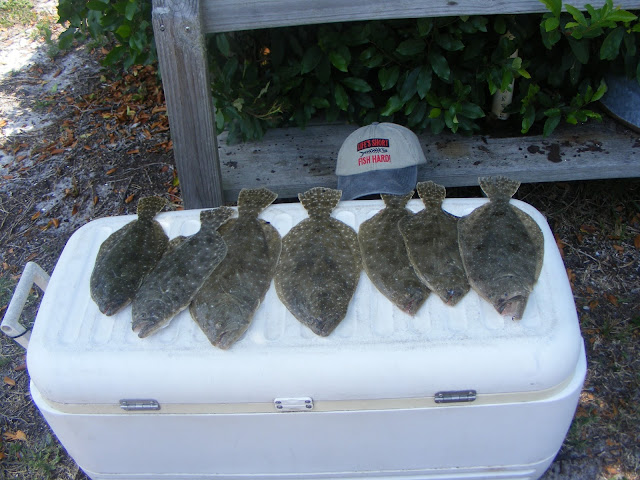The Flounder Drag
I was soaked in sweat and hoping for a stray cloud to pass overhead to provide, if only for a second, a brief respite from the July sun. As I scanned the sky I saw nothing too promising. The sky was nearly cloudless, but out of the corner of my eye I saw my rod turn into a lovely u shape that could only mean "fish on".
Just like that all thoughts of heat stroke melted away, and my only thought was to land this fish. The fish was a flatty, or doormat, or flounder depending on where your from. When hooked flounder tend to pull like a foul hooked trout, and this one was no different. The fish squirreled up to the surface sideways, and I was able to land him. Quickly I measured him, satisfied he was legal I threw him into the cooler, and quickly adjusted my lure. Maybe, I thought, we could get on a few more.
It was just my Dad and I cruising around Port St. Joe Bay in his 19 foot Sea Chaser. We were employing one of my favorite techniques, the flounder drag. The drag is quite a complicated process that involves casting out a D.O.A soft plastic shrimp, setting your rod in the rod holder, popping a cool beverage, and allowing your bait to drift in the current.
The real secret to catching flounder this way is to find a patchy bottom of grass flats, which St. Joe Bay is perfect for. Look for sandy potholes surrounded by grass, and your in business. It's important not to anchor and just allow the boat to drift in the current.
My favorite bait for this is a D.O. A. shrimp in white or natural colors, tied to a 7ft spinning rod using a loop knot. The loop knot allows for a more natural movement of the bait. I emailed Jerry McBride of D.O.A and asked him why the loop knot was so effective. He replied,
"Unless it comes with a split ring, every lure I fish goes on with a loop knot. I twitch my baits rather aggressively, and the loop knot allows a great deal more life-like movement. Clinch knots and uni-knots are reliable, but if the knots cinches down tight on the hook-eye, the shrimp or jerkbait pretty much pops straight forward when I twitch it. Fished with a loop knot, our 3-inch shrimp, particularly, tends to plane up in the water column, does a hard left twist, suspends briefly, then dives back toward the bottom, perfectly emulating a shrimp, crab, or pinfish that's been spooked out of the grass or mud, and is now escaping back to cover. I've never found another lure that generates reaction strikes to this degree, and the loop knot really enhances the action."

No comments:
Post a Comment